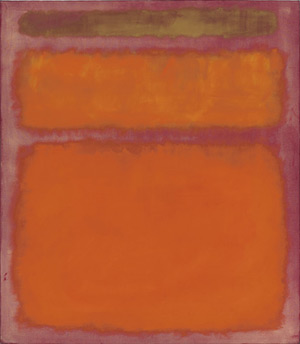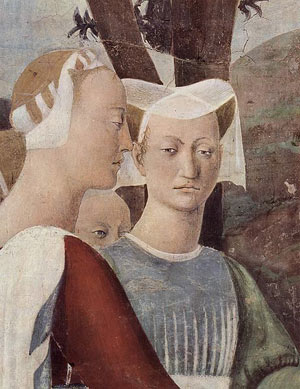Mark Rothko, born Marcus Rothkowitz (September 25, 1903 – February 25, 1970), was a Russian-American painter. He is classified as an abstract expressionist, although he himself rejected this label, and even resisted classification as an “abstract painter.” […]
A rise of Nazi sympathy in the United States heightened Rothko’s fears of anti-Semitism, and in January 1940, he abbreviated his name from “Marcus Rothkowitz” to “Mark Rothko.” The name “Roth,” a common abbreviation, had become, as a result of its commonality, identifiably Jewish, therefore he settled upon “Rothko.” […]
He apparently stopped painting altogether for the length of 1940. […] The most crucial philosophical influence on Rothko in this period was Friedrich Nietzsche’s The Birth of Tragedy. […]
The year 1946 saw the creation of Rothko’s transitional “multiform” paintings. The term “multiform” has been applied by art critics; this word was never used by Rothko himself, yet it is an accurate description of these paintings. […] For Rothko, these blurred blocks of various colors, devoid of landscape or human figure, let alone myth and symbol, possessed their own life force. They contained a “breath of life” he found lacking in most figurative painting of the era. […]
By the mid 1950’s however, close to a decade after the completion of the first “multiforms,” Rothko began to employ dark blues and greens; for many critics of his work this shift in colors was representative of a growing darkness within Rothko’s personal life. […]
In the spring of 1968, Rothko was diagnosed with a mild aortic aneurysm (defect in the arterial wall, that gradually leads to outpouching of the vessel and at times frank rupture). Ignoring doctor’s orders, Rothko continued to drink and smoke heavily, avoided exercise, and maintained an unhealthy diet. However, he did follow the medical advice given not to paint pictures larger than a yard in height, and turned his attention to smaller, less physically strenuous formats, including acrylics on paper. Meanwhile, Rothko’s marriage had become increasingly troubled, and his poor health and impotence resulting from the aneurysm compounded his feeling of estrangement in the relationship. Rothko and his wife Mell separated on New Year’s Day 1969, and he moved into his studio.
On February 25, 1970, Oliver Steindecker, Rothko’s assistant, found the artist in his kitchen, lying dead on the floor in front of the sink, covered in blood. He had sliced his arms with a razor found lying at his side. During autopsy it was discovered he had also overdosed on anti-depressants.
{ Wikipedia | Continue reading }
























